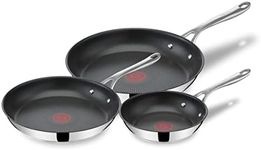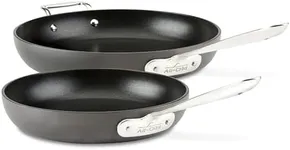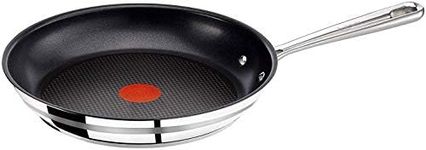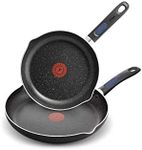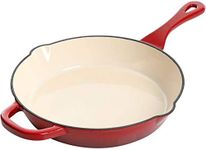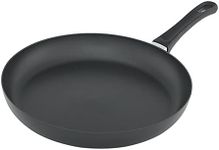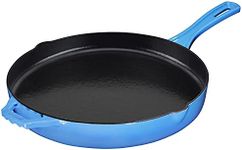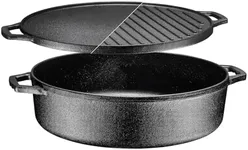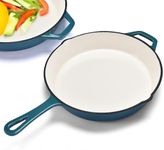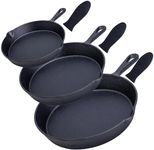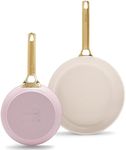Buying Guide for the Best Frying Pans
Choosing the right frying pan can make a big difference in your cooking experience. The best frying pan for you depends on what you like to cook, how much effort you want to put into maintenance, and your cooking style. Understanding the key features will help you pick a pan that suits your needs and lasts a long time.MaterialThe material of a frying pan affects how it heats up, how evenly it cooks food, and how easy it is to clean. Common materials include stainless steel, nonstick, cast iron, and aluminum. Stainless steel pans are durable and good for browning, but may require more oil. Nonstick pans are easy to clean and great for eggs or delicate foods, but the coating can wear out over time. Cast iron holds heat well and is excellent for searing, but it’s heavy and needs regular seasoning. Aluminum pans heat quickly and are lightweight, but often need a coating to prevent sticking. Think about what you cook most often and how much maintenance you’re willing to do when choosing the material.
SizeFrying pans come in various sizes, usually measured by diameter. Common sizes are 8, 10, and 12 inches. Smaller pans (8 inches) are good for single servings or small tasks like frying an egg. Medium pans (10 inches) are versatile for most households and can handle meals for two to three people. Larger pans (12 inches or more) are best for families or when cooking bigger portions. Consider how many people you usually cook for and the size of your stove burners when picking the right size.
Handle TypeHandles can be made from metal, plastic, or silicone, and their design affects comfort and safety. Metal handles are oven-safe but can get hot, so you may need a mitt. Plastic or silicone handles stay cooler but may not be suitable for oven use. Some handles are ergonomically shaped for a better grip. If you plan to use your pan in the oven, choose a pan with a metal handle. If you want comfort and don’t need oven use, a silicone or plastic handle might be better.
CoatingSome frying pans have a nonstick coating, while others do not. Nonstick coatings make cooking and cleaning easier, especially for foods that tend to stick, like eggs or pancakes. However, nonstick coatings can wear out and may not be suitable for high-heat cooking. Uncoated pans, like stainless steel or cast iron, can handle higher temperatures and are better for browning and searing. If you want easy cleanup and cook delicate foods, a nonstick pan is a good choice. If you prefer durability and high-heat cooking, consider an uncoated pan.
WeightThe weight of a frying pan affects how easy it is to handle. Heavier pans, like cast iron, retain heat well and are stable on the stove, but can be difficult to lift, especially when full. Lighter pans are easier to maneuver but may not heat as evenly. If you have limited strength or want a pan that’s easy to move, choose a lighter material. If you value heat retention and don’t mind the extra weight, a heavier pan might be better.
CompatibilityNot all frying pans work on every type of stove. Some pans, especially those with flat, magnetic bottoms, are suitable for induction cooktops, while others may only work on gas or electric stoves. Check if the pan is compatible with your stove type before buying. If you have an induction stove, make sure the pan is labeled as induction-compatible.

